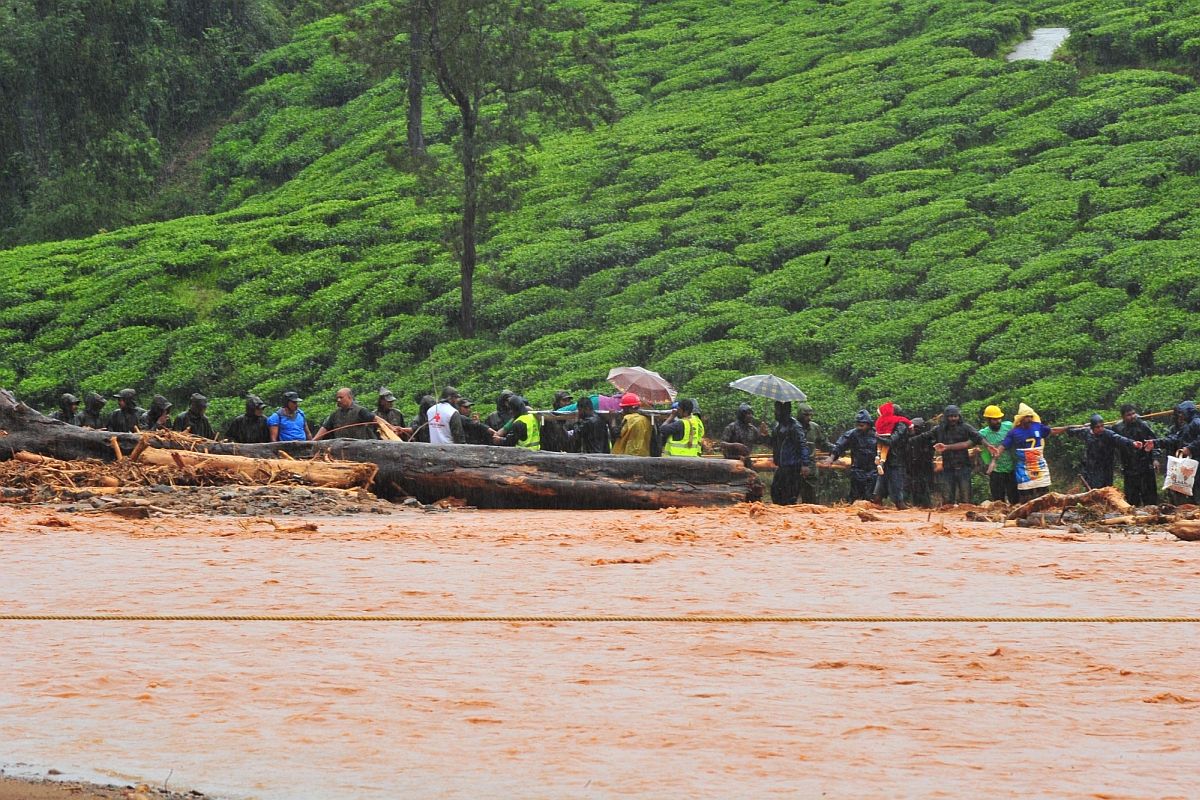The landslide in Wayanad, Kerala, is a stark reminder of the increasing vulnerability of our natural landscapes to the forces of climate change. This catastrophe, which claimed over 165 lives and left hundreds missing or injured, is a tragic echo of the 2018 floods that devastated the same region. As soldiers and rescuers brave treacherous conditions to search for survivors, we must confront the broader implications of this disaster and the urgent need for climate action. Kerala, renowned for its picturesque landscapes and thriving biodiversity, has become a hotspot for extreme weather events.
The landslide in Wayanad, triggered by incessant monsoon rains, is a consequence of unprecedented rainfall that overwhelmed the region’s natural defences. Experts have highlighted that the Arabian Sea is warming at an accelerated rate, contributing to the formation of deep convective clouds and heavy rainfall, and the Western Ghats are fragile. This phenomenon, intensified by climate change, has turned the state’s lush hills and valleys into potential death traps. The devastation in Wayanad is not merely a natural disaster but a human one, exacerbated by inadequate infrastructure and unplanned development. The destruction of the main bridge linking Mundakkai to Chooralmala underscores the fragility of our built environment in the face of natural calamities. The need for resilient infrastructure, capable of withstanding extreme weather, has never been more urgent.
Advertisement
As we rebuild, we must prioritise sustainable practices that respect the delicate balance of our ecosystems. Moreover, the plight of the affected communities in Wayanad sheds light on the social dimensions of climate change. The majority of the victims were from hillside villages and tea and cardamom estates, areas often inhabited by marginalized groups. These communities, already vulnerable due to socio-economic factors, are disproportionately impacted by climate-induced disasters. It is imperative that our response to such events includes a focus on social equity, ensuring that the most vulnerable receive the support and resources they need to rebuild their lives. In the wake of the Wayanad landslide, we must also re-evaluate our approach to disaster preparedness and response.
The swift deployment of the Indian Army and the coordinated efforts of rescue teams have been commendable. However, the challenges posed by adverse weather conditions highlight the need for more robust and proactive measures. Investing in early warning systems, community education, and emergency response infrastructure can significantly mitigate the impact of future disasters. The Wayanad tragedy is a call to action for policymakers, environmentalists, and citizens alike. Climate change is not a distant threat but a present reality that demands immediate attention. As we mourn the lives lost and support those affected, we must also commit to long-term strategies that address the root causes of such disasters. Ultimately, the resilience of Kerala’s landscapes and communities will depend on our collective will to embrace climate action. The Wayanad landslide serves as a poignant reminder of the stakes involved and the urgent need for a concerted effort to safeguard our planet for future generations.









